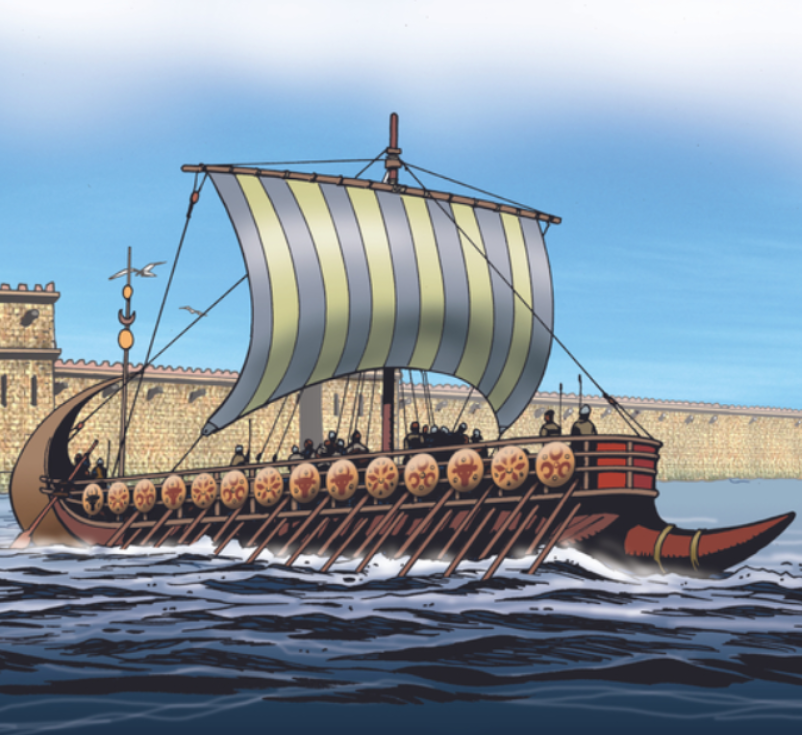- UNITS
- Unit 2 - Ancient Trading Empires
- The Game of Words
- Prof. Xue and Luk's Conversation
- An Active Reader
- Asking Questions
- Language Knots
- Test Corner
- LEARNING

♦ This introductory exercise aims to give you a feel for the sound and rhythm of the language, whilst presenting an overview of the maritime topic at hand. ♦ By reading and then listening to the accompanying audio, you’ll discover how words are pronounced and some simple sentence structures. ♦ Once you are comfortable with how the written and spoken words are connected, you’ll be ready to focus on keywords in the next exercise.
Ancient Trading Empires
The desire for money and power are two of the biggest drivers in history. As boats improved, they became an important tool for trade - making money, and empire - getting power. This section looks at which empires and traders first used boats, and what these boats were like.
It is far simpler to take goods over water, than it is to take goods over land. This is why long-distance vessels started long-distance trade. Egyptians invented the sail, but their river-boats didn’t work well on the rough seas, they mostly stayed near the coast. We think the first long-distance trade was done by the merchants of Mesopotamia. Babylon was their central trading port.
However, around 1000 BC the Phoenicians became the best boat-builders, maritime inventors, and navigators. They lived in the area of today’s Lebanon and Israel, but they traded all around the coast of the Mediterranean. Their trading network connected India and China with the Middle East and the Mediterranean, through to Spain and the West African coast. The Phoenicians invented the galley; these were long flat ships that were powered by rowing and by sails. The Phoenicians also invented the alphabet; writing helped with their trading activities.
Around 600 BC, the maritime centre had moved to the Greeks, and after that, the Romans. The Corinthians invented the famous trireme. ’Tri’ means ‘three’, so a trireme has three levels of oars. With more oarsmen, the trireme was more powerful, faster and larger. The trireme became the famous warship for all of the Greek States. The Greeks had wars between themselves, and with the Persians. Later, Alexander the Great captured these Greek ships and used them for his own Macedonian Empire. Alexander also used catapults onboard his warships.
The Roman Empire followed the Greeks and Macedonians. The Romans’ domination was based on their military - their army and their navy. The Romans’ naval soldiers were called mariners. Their massive war galleys had tall towers, and their archers fired arrows down on their enemies. They kept a strong navy to keep peace and control trade.
The Romans traded in smaller galleys, and they sailed across the Mediterranean and up the coasts of Western and Northern Europe. They reached Britain in 55 BC. Their merchants traded mainly fish, olive oil, wine, and grain. Their trading galleys became larger over time – their largest trading ships could hold 400 tons of cargo.
After the Roman Empire, similar boats were used for over 1000 years. The ‘longship’ was like the war galley, and the ‘round ship’ was like the round hulled trading ships. The Phoenician and Roman galleys were a big jump forward in boat technology. These boats made trading by sea so valuable to empires. There was not the same big improvement in boat design until around 1400 AD.
